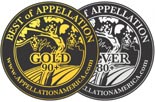
 Lake County, just north of Napa, has been growing premium wines since the mid 19th century when people first recognized that the varied soils and microclimates of the region would produce wines of exceptional quality. In Lake County, grapes are grown in four distinct appellations – Guenoc Valley, Red Hills, High Valley, and Clear Lake – each with its own distinctive soil type. These include the sandy loam, serpentine soils of Guenoc; the iron red volcanic soils of the Red Hills; the gray-weathered, cinder ash and silt blends of High Valley; and - at the base of dormant volcano Mount Konocti - the alluvial soils of the ‘big valley’ in the Clear Lake AVA. The common factor in Lake County’s diverse terroir is the moderating influence of Clear Lake, the largest natural lake in California, which gives the county its name. Warm days and plummeting nighttime temperatures let grapes ripen at optimum rates for moderate sugars with sufficient acidity. Protected by the low summer humidity of Lake County, botrytis-susceptible grapes adapt well in this environment.
Lake County, just north of Napa, has been growing premium wines since the mid 19th century when people first recognized that the varied soils and microclimates of the region would produce wines of exceptional quality. In Lake County, grapes are grown in four distinct appellations – Guenoc Valley, Red Hills, High Valley, and Clear Lake – each with its own distinctive soil type. These include the sandy loam, serpentine soils of Guenoc; the iron red volcanic soils of the Red Hills; the gray-weathered, cinder ash and silt blends of High Valley; and - at the base of dormant volcano Mount Konocti - the alluvial soils of the ‘big valley’ in the Clear Lake AVA. The common factor in Lake County’s diverse terroir is the moderating influence of Clear Lake, the largest natural lake in California, which gives the county its name. Warm days and plummeting nighttime temperatures let grapes ripen at optimum rates for moderate sugars with sufficient acidity. Protected by the low summer humidity of Lake County, botrytis-susceptible grapes adapt well in this environment.
Before prohibition in 1921, Lake County had 28 commercial wineries, making it the largest pre-prohibition grape-producing county in California, but the area was slow in recovering as vineyards had been torn out and replaced by pear and walnut orchards. From less than 100 acres in 1965, Lake County vineyard acreage has grown to over 8,800 today and is becoming one of the wine industries fastest growing regions. Sauvignon Blanc, one of the major wines to distinguish itself during the recovery, is now being supplanted by the new generations of big reds. Cabernet Sauvignon has by far the most acreage, with Merlot a distant second. However, despite being third in total revenue (according to the 2004 Lake County Winegrape Tonnage and Pricing report), Petite Sirah is considered amongst the best in its class.
~ information provided by Chris Ruttan, Canino Ridge Vineyards



 Bi-State Upper Hiwassee Highlands an AVA
Bi-State Upper Hiwassee Highlands an AVA  Lake County:
Lake County: Remote Manton Valley New California AVA
Remote Manton Valley New California AVA WAWGG Banquet Explores Washington State Terrior
WAWGG Banquet Explores Washington State Terrior Taking Focus on Appellation
Taking Focus on Appellation A Day in the (Rutherford) Dust
A Day in the (Rutherford) Dust Whitehall Lane Winery, A 20 Year Story of Vineyards
Whitehall Lane Winery, A 20 Year Story of Vineyards Embracing Virginia’s Terroir
Embracing Virginia’s Terroir  Appellation America to Drop Paywall - Provide Open Access
Appellation America to Drop Paywall - Provide Open Access

